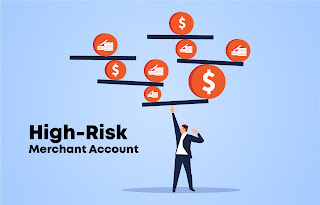What is a High-Risk Merchant Account and How does it Work?
You need a High-Risk Merchant Account, if you have an online business which needs to handle credit card transactions and has a higher risk of chargebacks. Yet, what is a High-Risk Merchant Account and how would you know that you want one?
To open a High-Risk Merchant Account you want to find a procuring bank that will guarantee your business. Nonetheless, to build your odds of improving, ask a dependable installment service provider for help.
What is a High-Risk Merchant Account?
A High-Risk Merchant Account is a payment processing account for organizations viewed as high-risk to the banks. As high-risk organizations are more inclined to chargebacks, they accompany the requirement for paying higher expenses for merchant administrations.
If a business accompanies a high capability of chargebacks, or the set of experiences shows numerous chargebacks and discounts, the bank might put a rolling reserve on your account. How much cash will cover the chance of chargebacks or fraud?
What are the contrasts between low and High-Risk Merchant Account?
Before you apply for a merchant account, it's great to know whether you're a high-risk merchant or a low one. Merchant account suppliers have their standards for sorting organizations as far as their possible risk, yet there are a few qualities for both groups of merchants.
Anyway, what are the contrasts between low and High-Risk Merchant Account?
What is a low-risk merchant?
Note that each payment processor has its own set of rules, yet there are a few qualities for every one of the players available.
Here are general qualities for low-risk merchants:
Under $20,000 processed month to month
Normal credit card transaction is under $500
The industry in which a merchant works are viewed as generally low-risk (these are, for example, low-risk clothes and shoes, family merchandise, child items)
Zero to low chargeback proportion
The country a business works in is viewed as generally low-risk (European Union nations, USA, Canada, Australia, Japan)
Limited returns.
What is a high-risk merchant?
The more chargebacks a business accompanies, the higher the risk. Henceforth, the factors that matter are: processing history and industry reputation (it's important to keep your chargeback proportion lower than 0.9% of your total transactions).
Here are general qualities of a high-risk merchant, yet note that it broadly contrasts dependent on a specific payment processor's rule:
More than $20,000 month to month deals
Normal credit card transactions higher than $500
A business offers items and administrations to nations known for significant levels of fraud
Bad credit history and unnecessary chargebacks.
Conclusion
When you are thinking of applying for a High-Risk Merchant Account, you should remember that its terms can be stricter than that of a normal merchant account. So, read the contract very carefully and completely. Also you should check for any hidden or additional rates, charges, and how high is the rolling reserve.




Comments
Post a Comment